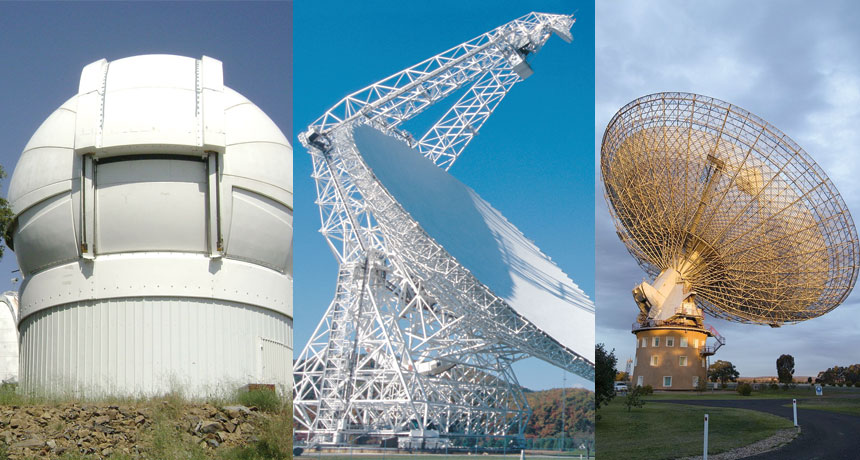Search for E.T. gets financial boost
Private funds will make listening data publicly available

LOOKING FOR LIFE The Parkes (right) and Green Bank (middle) radio telescopes, as well as the Automated Planet Finder at Lick Observatory (left), will aid in the hunt for alien transmissions.
O. Alexandrov, CC BY-SA 3.0 (left); NRAO/AUI/NSF (middle); David McClenaghan, CSIRO (right)







